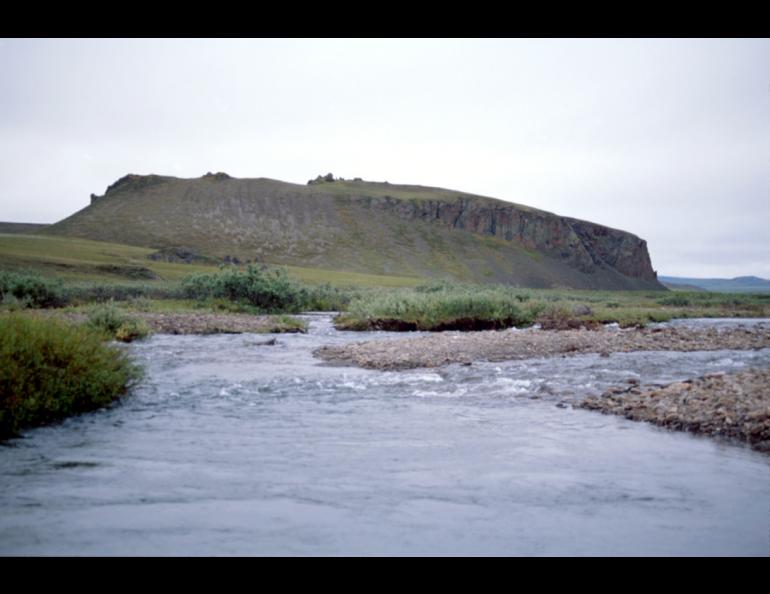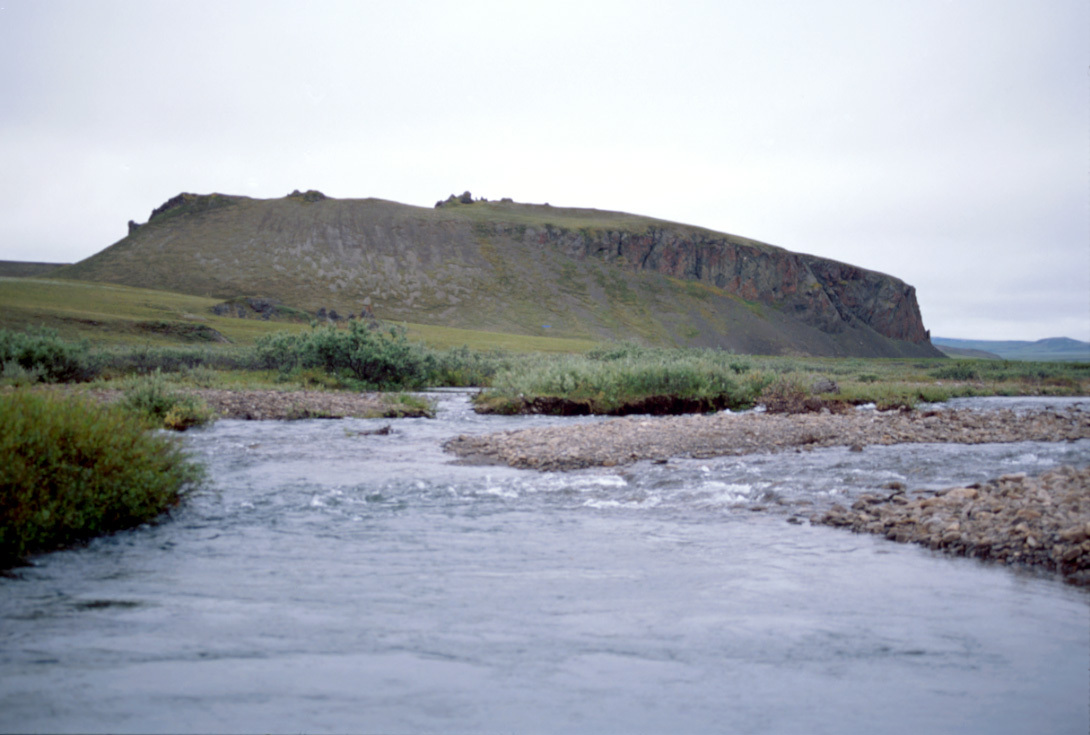
Climate Change and the People of the Mesa
Experts say it is hard to measure mankind's current suffering as a result of climate change. However, they do know that Alaska was once the setting for an environmental shift so dramatic it forced people to evacuate the entire North Slope, according to Michael Kunz, an archaeologist with the Bureau of Land Management.
About 10,000 years ago, a community of people lived on Alaska's North Slope, the treeless tundra that extends north from the Brooks Range to the sea. These people, known as Paleoindians, used a thick backbone of rock west of the Colville River as a hunting lookout. Kunz first discovered stone spear tips at the site, known as the Mesa, in 1978.
The people of the Mesa lived at a time when the Arctic was undergoing a change not unlike the changes some scientists are documenting today. As the world emerged from the last ice age about 15,000 years ago, grasslands covered much of the Bering Land Bridge, a wide chunk of land that mated Siberia with Alaska.
To survive on the North Slope, the Mesa people needed a large, plentiful source of food, Kunz said. Caribou were scarce during that time, but bison were plentiful on the grasslands. Today, those bison provide clues that show how climate change affected these ancient Alaskans, Kunz said.
For many thousands of years, the area that is now Alaska was part of an enormous swath of dry grasslands that made up much of the Bering Land Bridge. When the planet emerged from the last Ice Age about 15,000 years ago, air temperatures warmed, glaciers began melting, sea level rose, and salt water slowly drowned the Bering Land Bridge. The encroachment of the ocean caused an increase in precipitation around the North Slope that allowed cottongrass and other sedges to nudge out the grasses preferred by bison.
About 10,000 years ago, as the North Slope evolved into its current state, bison disappeared, and, along with them, the last evidence of the Mesa people. Kunz theorizes that the extinction of bison caused the Mesa people to move from the North Slope or die.
"This is totally the effect of the environment," Kunz said. "Not only did it run the Paleoindians out of there, it made the place unlivable for anyone for 1,500 years."
By examining bones and stone tools, archaeologists found that people moved back to the North Slope about 8,000 years ago, about the same time caribou returned after what seems like a population crash that lasted more than 3,000 years.
Car exhaust could not have triggered the warming that may have chased the Mesa people from the North Slope. Kunz said climate change has occurred many times before and is inevitable today.
"The system has always been dynamic," he said. "We're not going to stop climate change. Just like the Mesa Paleoindians-if we can't adapt or adjust, we're going to disappear."





